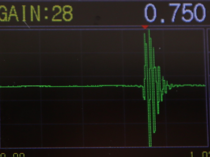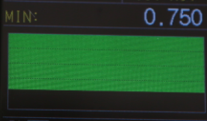A-Scan Ultrasonic Testing
What is A-Scan in Ultrasonic Testing?
An ultrasound scan (also called an A-scan) is a test that uses high-frequency sound waves to generate a picture of a weldment’s interior. The image produced by ultrasound scanning is similar to that produced by computed tomography (CT). A-scan can be used to locate flaws that may not be visible through visual inspection.
However, while these scans provide highly detailed images of materials’ internal structure, A-scans provide less detailed images because they can only scan objects within their cross-section rather than across multiple cross-sections as CT scans do. Although not as detailed as CT scans, A-scans can still detect flaws in most metals and some nonmetals like wood.
Application
You can use A-scan for several field applications. One important application of the A-scan in NDT is that it gives engineers an efficient way to assess pipe flaws in underwater pipelines.
In addition to underwater applications, A-scan testing has proven useful in making sure metallic pipes are safe for drinking water transmission and other fluid transmissions.
For example, tests have shown that A-scan can detect anomalies in steel pipes because of corrosion or faulty welds.
Importance
Simply put, without a baseline scan, you do not know what normal looks like. It is important to have a baseline for whatever purpose you need it. Whether you are improving your manufacturing process or trying to find surface defects in your products, A-scan testing can provide those answers.
For example: If you wanted to see if there was any change in dimensional tolerances of your product over time (maybe as part of a cost-containment initiative) but did not have any previous data – well, now you do.
B-Scan Ultrasonic Testing
What is B-Scan in Ultrasonic Testing?
B-scans bounce sound waves off metal or other solid surfaces to make pictures of what is inside. They are used to find flaws in metals or other solids. The metal part being tested is called a test object, and it is mounted on a machine called an ultrasonic test unit.
As it moves along on its rails, an arm with a tiny probe sends sound waves into its surface. A computer collects those waves as they echo back from inside the part. With that information, the software makes a picture of what is inside.
What you see when you look at your smartphone is not different—except that the smartphone has far better resolution. That makes some ultrasound images clearer than others!
Application
One application of a B-scan machine is to inspect surfaces of metals where there can be cavities or defects in them.
For example, buried cracks within aluminum engine blocks or even hard-to-reach areas inside engines would be difficult for non-destructive techniques. Another application that uses B-scan machines is inspecting welds or cracks in a vessel under pressure, such as a boiler.
The other main application that uses these machines is inspections on aircraft wings or fuselages.
These three applications (and many others) use B scan radiography due to its ability to produce high-quality images at high speeds and with great accuracy, making it superior to most other inspection methods.
Importance
B-Scan is important in NDT for one simple reason: B-Scan takes cross-sectional images of a part instead of surface defect images like A-Scan. Doing this allows inspectors to understand better how serious defects are in part.
Without using B-Scan, parts will look clean when major problems cannot be seen with an A-Scan inspection. People often create defective parts without even knowing it because they are not viewing defects at a microscopic level.
B-scan is extremely important for detecting surface and subsurface defects without expensive XRD or CT scanning tools.
Post time: Mar-29-2022


